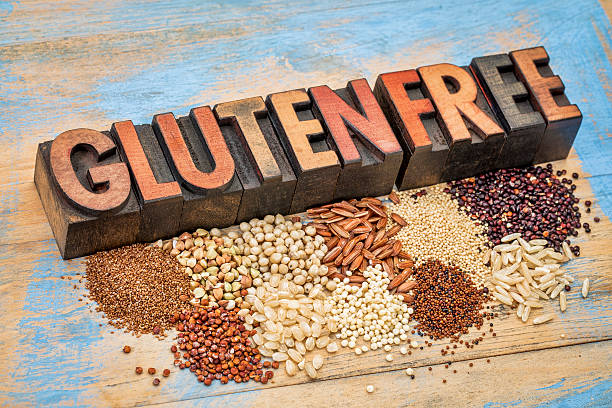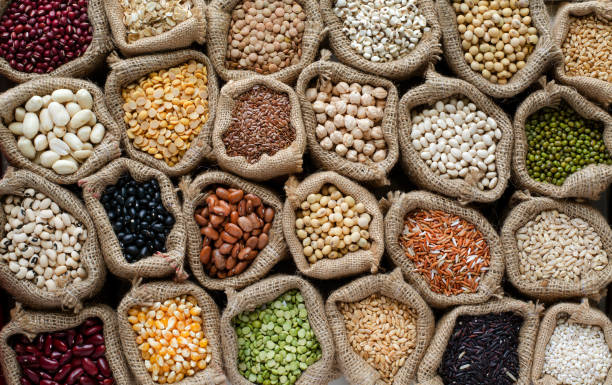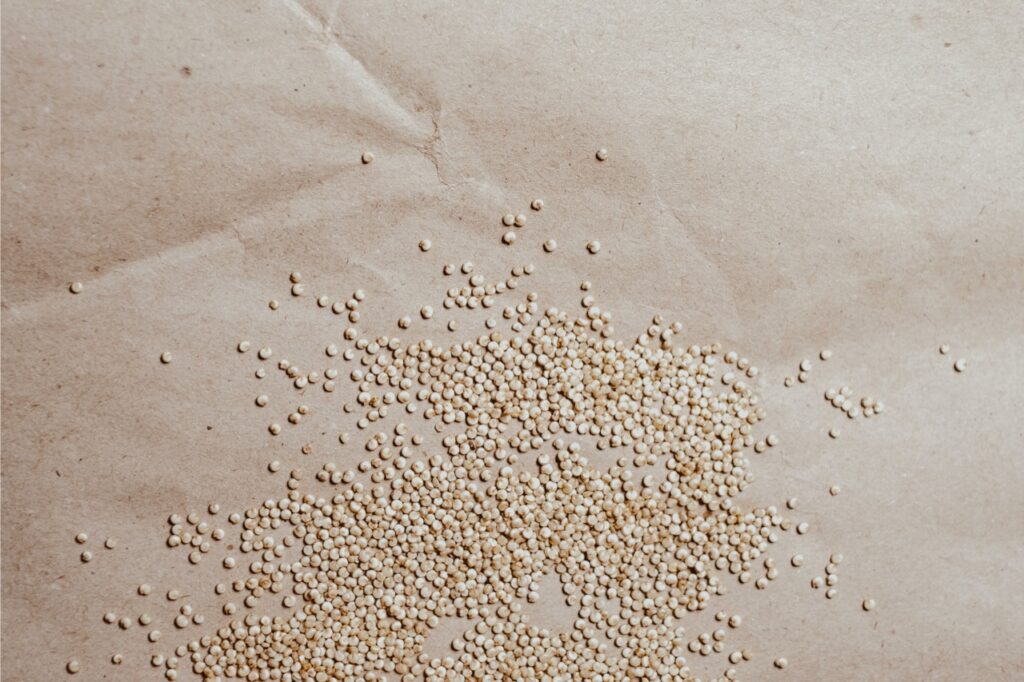What to Eat and Drink
Which Quinoa Is a Protein Source
Protein is an essential macronutrient that plays an important role in our bodies’ general health and functioning. It is in charge of tissue formation and repair, the production of enzymes and hormones, and the maintenance of proper immunological function. A sufficient amount of protein in your diet is essential for maintaining muscle mass, increasing satiety, and assisting with weight management.
Most people think of animal goods like meat, eggs, and dairy when they think about protein sources. Finding high-quality protein sources can be more difficult for people following a plant-based or vegetarian diet. Quinoa comes into play here.
Quinoa has grown in popularity as a complete protein source for vegetarians and vegans in recent years. It contains all nine necessary amino acids, making it an ideal solution for those who want to achieve their protein requirements without using animal products. But, with so many varieties of quinoa available, which one provides the most protein? Let’s investigate the world of quinoa to find out.

Quinoa as a Superfood
Quinoa is frequently referred to as a “superfood” due to its high nutritional value. It is not only gluten-free, but it also contains a variety of vitamins, minerals, and antioxidants. One of its distinguishing characteristics is its capacity to deliver all nine essential amino acids, which are the protein building blocks that our bodies cannot manufacture on their own.
Quinoa is distinct in that it includes these necessary amino acids in balanced amounts. This is crucial since most plant-based protein sources lack one or more essential amino acids, necessitating the consumption of multiple foods to obtain a full protein profile. Quinoa, on the other hand, provides a full protein source in a single component.
Understanding quinoa protein content
Before we go into the many types of quinoa and their protein content, let’s first understand how quinoa protein content is calculated. Protein content is often stated as a percentage of the food’s dry weight. For example, if a quinoa type has a protein content of 15%, it signifies that protein accounts for 15% of its weight.
The protein content of quinoa might vary based on the species and growth conditions. Quinoa has 14-18% protein on average, which is greater than most other grains. As a result, it is a fantastic alternative for anyone trying to improve their protein intake, particularly if they follow a plant-based diet.

Comparing protein content in different quinoa varieties
Let’s compare the protein composition of different quinoa kinds now that we’ve learned how to measure it. Quinoa comes in a variety of colors, including white, red, black, and even tri-colored varieties. While the protein composition of these types does not change greatly, there may be minor differences.
White quinoa, the most widely accessible kind, contains 14-16% protein on average. Red quinoa, on the other hand, contains slightly more protein, ranging from 14 to 18%. Black quinoa has a comparable protein concentration range of 14-16%. Tri-colored quinoa, a combination of white, red, and black varietals, has a protein value comparable to white quinoa.
Although the differences in protein composition between various quinoa kinds may appear minor, they can be important for people who want to maximize their protein intake. If you want to increase your protein intake, choosing the kind with the highest protein content may be useful.
Factors that affect quinoa protein content
While the variety influences the protein content of quinoa, other factors can also influence it. The protein content of quinoa can be influenced by soil quality, climate conditions, and growing practices.
Quinoa grown in nutrient-rich soil and under ideal growing circumstances has a higher protein content. Furthermore, organic quinoa may have a little higher protein content than conventionally cultivated quinoa because it is grown without the use of synthetic fertilizers and pesticides.
These elements may not have a substantial impact on quinoa’s protein level, but they can add to its overall nutritional quality. Choosing high-quality, organic quinoa helps ensure that you’re getting the most protein and other key nutrients.

Quinoa cooking techniques
Quinoa must be cooked properly to retain its protein content and promote optimal nutritional absorption. It can lose protein and other vital elements if it is overcooked or undercooked. Here are a few pointers to help you cook quinoa perfectly:
- Before cooking, thoroughly rinse the quinoa to remove any residue or harshness.
- Use the proper water-to-quinoa ratio, which is typically 2 cups of water for every 1 cup of quinoa.
- Bring the water to a boil, then reduce to a low heat and cook the quinoa for 15 minutes, or until the water is completely absorbed.
- When the quinoa is done, fluff it with a fork and set it aside for a few minutes before serving.
You can maximize the protein content of quinoa and reap its maximum nutritional advantages by using these simple cooking techniques.
Including high-protein quinoa in your diet
Now that you’ve learned about the protein level of various quinoa kinds, let’s look at some tasty ways to include high protein quinoa into your meals. Quinoa is a versatile ingredient with a mild and nutty flavor that can be utilized in a number of cuisines. Here are some suggestions to get you started:
- Quinoa bowls: Combine cooked quinoa with roasted vegetables, leafy greens, and your choice of protein, such as tofu or grilled chicken, to make a nutritious and protein-packed dinner.
- Quinoa salads: Combine cooked quinoa with fresh veggies, herbs, and a tangy vinaigrette dressing to make a delicious and protein-rich salad.
- Quinoa stir-fries: Make wonderful stir-fries using cooked quinoa, your favorite vegetables, plus a protein source like shrimp or tempeh.
- Quinoa breakfast porridge: Begin your day with a substantial and protein-packed breakfast by boiling quinoa with milk or plant-based milk and topping with your favorite fruits, nuts, or seeds.
These are just a few ways to add high protein quinoa into your diet. Feel free to get creative and try out different flavors and ingredients to suit your tastes.

For comparison, here are some other plant-based protein sources
While quinoa is an excellent plant-based protein source, consumers wishing to diversify their protein intake have alternative options. Here are a few plant-based protein options to consider:
- Lentils: A nutritional powerhouse, containing 18-20% protein. They’re also high in fiber, iron, and folate, making them a nutritious complement to any diet.
- Chickpeas: Often known as garbanzo beans, contain roughly 15% protein. They are adaptable and can be used in a variety of cuisines, including soups, stews, and salads.
- Quorn: Quorn is a fermented fungus that is used to make a meat replacement. It contains around 15% protein and is an excellent vegetarian alternative to meat.
- Edamame: Edamame, which are immature soybeans, contain approximately 11% protein. They make an excellent snack and can also be used in stir-fries, salads, and soups.
Conclusion
Quinoa is an excellent choice for me as I look to boost my protein intake with a nutritious and versatile grain. While the protein content may vary slightly between different quinoa varieties, the differences are minimal. White, red, black, and tri-colored quinoa all offer comparable protein content, ranging from 14-18%.
When choosing quinoa, it’s important for me to consider factors such as growing conditions and farming practices that can affect its overall nutritional quality. Opting for high-quality, organic quinoa can ensure that I’m getting the best possible protein content along with other essential nutrients.
Incorporating high protein quinoa into my meals is easy with a little creativity. From quinoa bowls to salads and stir-fries, there are countless delicious ways for me to enjoy this versatile grain. And if I’m looking to diversify my plant-based protein intake, options such as lentils, chickpeas, Quorn, and edamame can provide additional protein sources for me to explore.


